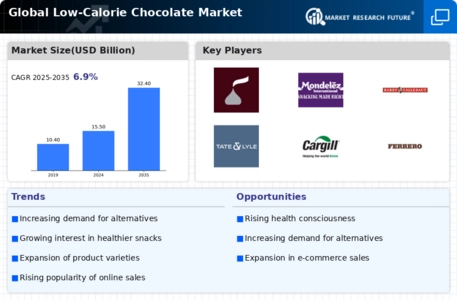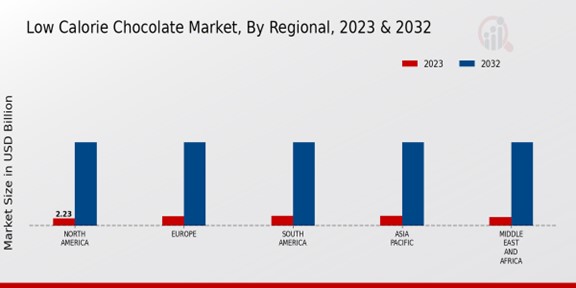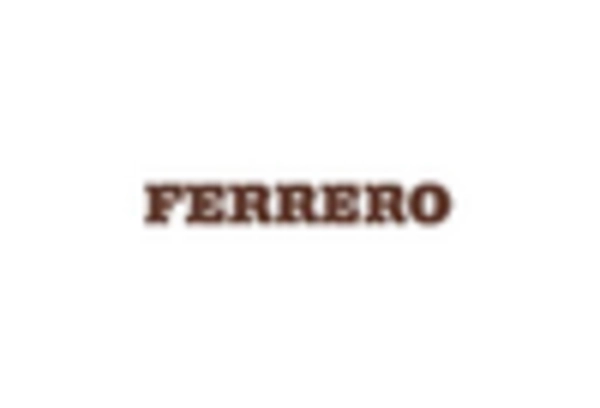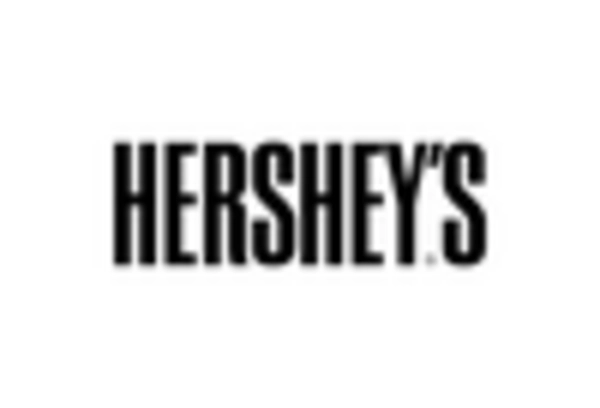Rising Demand for Healthier Snacks
The increasing awareness of health and wellness among consumers is driving the demand for low-calorie chocolate products. As individuals become more health-conscious, they seek alternatives that satisfy their sweet cravings without compromising their dietary goals. This trend is particularly evident among millennials and Generation Z, who prioritize healthier snack options. The Global Low-Calorie Chocolate Market Industry is witnessing a surge in product offerings that cater to this demographic, with a projected growth rate of approximately 8% annually. This shift towards healthier snacking options is likely to continue, as consumers increasingly prefer products that align with their lifestyle choices.
Increased Focus on Clean Label Products
Consumers are increasingly seeking transparency in food labeling, leading to a demand for clean label products in the Global Low-Calorie Chocolate Market Industry. This trend reflects a broader movement towards natural and minimally processed ingredients. Brands that emphasize clean labeling are likely to attract health-conscious consumers who are wary of artificial additives and preservatives. Market Research Future indicates that products marketed as clean label are experiencing higher sales growth compared to conventional options. As this trend continues, manufacturers may prioritize ingredient integrity, thereby enhancing their competitive edge in the market.
Innovative Flavor Profiles and Ingredients
Innovation in flavor profiles and the use of unique ingredients are pivotal in the Global Low-Calorie Chocolate Market Industry. Manufacturers are experimenting with various natural sweeteners, such as stevia and monk fruit, to enhance the taste of low-calorie chocolates while maintaining their health benefits. Additionally, the introduction of exotic flavors and textures is attracting a broader consumer base. This trend is supported by market data indicating that products with innovative ingredients are gaining traction, with a notable increase in sales. As companies continue to invest in research and development, the market is expected to expand further, appealing to diverse consumer preferences.
Growing Popularity of Online Retail Channels
The rise of e-commerce has transformed the way consumers purchase low-calorie chocolate products. Online retail channels provide convenience and accessibility, allowing consumers to explore a wide range of options from the comfort of their homes. The Global Low-Calorie Chocolate Market Industry is benefiting from this trend, as online sales are projected to account for a significant portion of total sales in the coming years. This shift is particularly relevant in regions where traditional retail options may be limited. As more consumers turn to online shopping, brands are likely to enhance their digital presence, further driving market growth.
Rising Awareness of Obesity and Related Health Issues
The growing prevalence of obesity and related health issues is prompting consumers to seek healthier alternatives, including low-calorie chocolates. Public health campaigns and educational initiatives are raising awareness about the importance of maintaining a balanced diet. This societal shift is influencing purchasing behavior, as consumers become more inclined to choose products that support their health goals. The Global Low-Calorie Chocolate Market Industry is poised to benefit from this trend, with an increasing number of individuals opting for low-calorie options as part of their dietary regimen. This heightened awareness is likely to sustain market growth in the foreseeable future.


















Leave a Comment